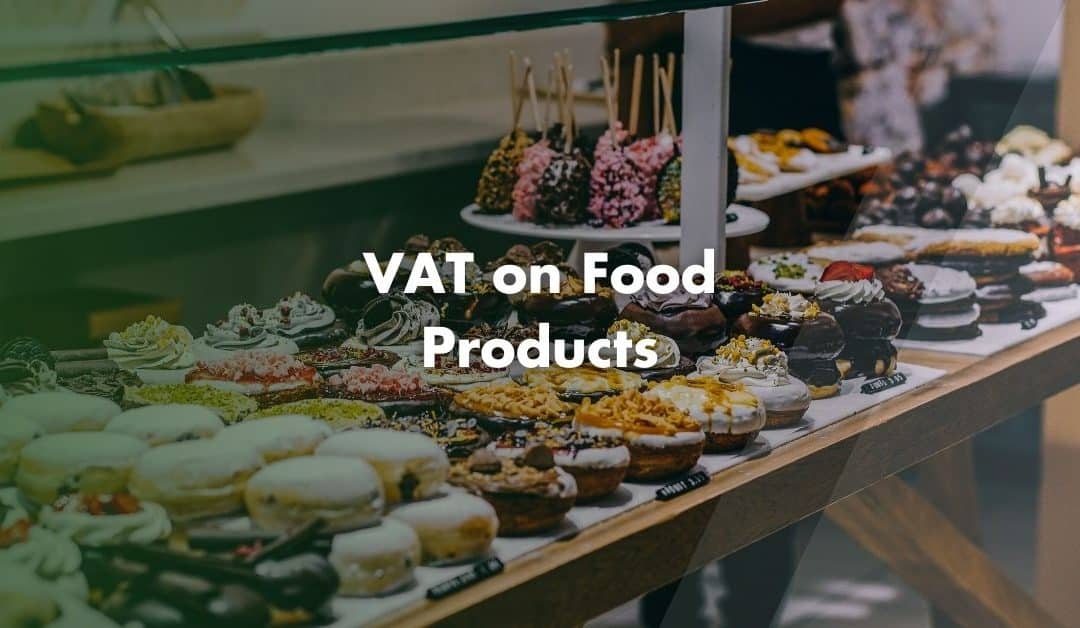VAT (Value Added Tax) on food is often a confusing subject. The rules aren’t just black and white; they vary depending on the type of food, it’s preparation and even how people eat it.
While most essential food items are zero-rate (no VAT), there are plenty of curious exceptions. Hopefully, we can help without sending you into a VAT-induced headache.
What Does Zero-Rated Mean?
When a food item is zero-rate, it’s still technically within the VAT system, but with a rate of 0%. This means no added VAT to the selling price. Retailers and businesses must still track and report these sales, but customers do not pay VAT on them.
Think of it like being an invitee to an exclusive dinner; you’re on the list, but you don’t have to pay the bill.
This approach helps keep everyday groceries affordable. However, the distinction is not always straightforward and not all food qualifies.
Zero-Rated Food
The majority of staple food items fall into the zero-rated category. These are foods that are essential for everyday consumption. These include:
- Fresh meat, fish and poultry
- Fruit and vegetables
- Bread, rolls and most non-sweet bakery goods (excluding some confectionary)
- Milk, cream, cheese, butter and plain yoghurt
- Tea, coffee and herbal teas (but not bottled iced tea or coffee)
- Flour, sugar, salt and cooking oils for home baking and cooking
These items are usually raw or only slightly processed, forming the basis of a typical meal. Because they are necessary for a balanced diet, the government does not apply VAT.
Standard-Rated Food
In contrast, certain foods are subject to the full 20% standard rate of VAT. These are usually non-essential or luxury items. These include:
- Sweets, chocolates and similar confectionary
- Ice cream, sorbets and other frozen deserts
- Fizzy drinks, sports drinks and energy drinks
- Potato crisps and similar savoury snacks
- Alcoholic drinks
- Mixes and ingredients for homebrewing and winemaking
These items are more indulgent and therefore attract VAT at the full rate. However, this distinction can be fine.
Raw nuts? Zero-rated. Roasted or salted nuts? Standard-rated. Yes, the taxman even cares how your cashews are cooked.
VAT on Hot Food and Catering
Any food sold hot and for immediate consumption is almost always standard-rate. This includes hot meals sold by:
- Cafés
- Takeaways
- Restaurants and Pubs
- Street food vans
- Anywhere which deliberately keeps food warm for sale
Examples of specific food items include:
- Any cooked meals
- Toasted sandwiches, paninis, pies and pasties
- Freshly made pizzas and burgers
- Tea, coffee and hot chocolate
In short, if it’s toasty and tasty, it’s taxable.
VAT on Cold Takeaway Food
Cold takeaway food generally benefits from zero-rated VAT status, unless it falls into the indulgent or non-essential list. Here’s the differences:
Zero-Rated
- Cold sandwichs
- Pasta salads
- Fresh wraps
Standard-Rated
- Fizzy drinks
- Chocolate bars
- Bottled juices and energy drinks
Additionally, if people consume cold packaged food on the premises, like in a café or food court, it is also standard-rate. This includes seating areas provided by the business, even if shared with others in a public space.
Meal Deals and Mixed Supplies
Many businesses offer meal deals that bundle multiple items for a single price. These are known as “mixed supplies”. VAT treatment depends on the contents, as meal deals often include a mix of zero-rate and standard-rate items.
If one item is standard-rate, such as a chocolate bar, part of the total price will be subject to VAT. However, if the item is a minor component and meets certain cost conditions, the whole deal might remain zero-rate.
So, whether the chocolate bar in your £3 meal deal is costing you tax depends on its size, value and the company’s pricing policy.
Cakes vs Biscuits
One of the most well-known VAT disputes involved Jaffa Cakes. Yes, this really happened.
McVitie’s once went to court to argue that Jaffa Cakes are cakes (therefore zero-rate) and not biscuits (which are standard-rate if covered in chocolate).
The verdict?
They’re cakes!
Why?
The court ruled they were cakes because they become hard when stale, unlike biscuits which go soft. As a result, Jaffa Cakes remain zero-rated. As previously stated, plain biscuits are zero-rate, but if they’re covered in chocolate, they become standard-rated. Here’s how the crumbs fall:
- Flapjacks, sponge cakes and meringues are zero-rate
- Chocolate-covered biscuits, most cereal bars and marshmallow sweets are standard-rate
This proves that with VAT, it’s not just what’s in a product, it’s how it behaves. The VAT man loves a good cake debate!
Contact Us about VAT on Food!
We recommend you always refer to up-to-date HMRC guidance if you’re ever unsure about the rules. But if you’re the one selling food, professional advice is never a bad idea.
At Pi Accountancy, we’re not just accountants; we’re Chartered Accountants with one of the most reputable and premium accounting bodies. We are registered and regulated by ACCA; so you can rest assured that you are in good hands. Knowing this, don’t hesitate to get in touch with us if you require assistance or have questions: Pi Accountancy | Contact Us
Bon Appétit!
This article is for general informational purposes only and does not constitute legal or financial advice. While we aim to keep our content up to date and accurate, UK tax laws and regulations are subject to change. Please speak to an accountant or tax professional for advice tailored to your individual circumstances. Pi Accountancy accepts no responsibility for any issues arising from reliance on the information provided.

